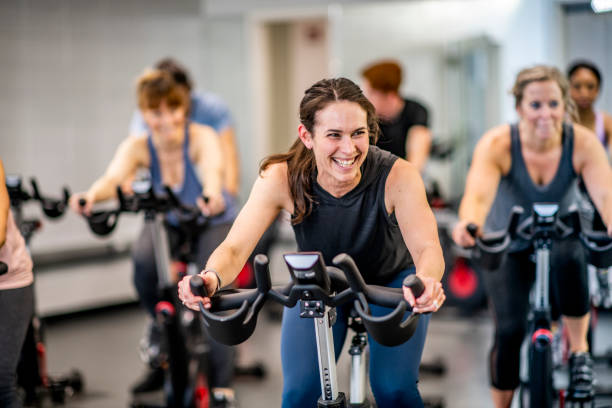Indoor cycling is great, obviously. You get to work out your cardiovascular system and also burn off a lot of calories. You don’t stress your knees, unlike with running. And cycling indoors assures you of absolute comfort and safety. You don’t have to worry about the weather, falling, getting hit by cars, hitting pedestrians, or getting chased by dogs.
Indoor cycling is also easy, and some people might even think that all they have to do is to just hop on up and pedal, and that’s all there is to it. But there’s more to indoor cycling than you think, especially when you want to do it right. So, here are some tips for proper indoor cycling.
Warm Up First
Some people think that indoor cycling is just like riding a bike—you just hop on and go. Who needs a warmup?
Actually, everyone needs a warmup. Indoor cycling is an exercise, remember. And you need to properly warm up so your body is optimized and you reduce the chance of injury. It’s not as if warming up takes a lot of time, as an extra 5 to 10 minutes should do the trick.
Adjust the Seat Height
If your seat is too high or too low, you won’t get the best results. In fact, you might suffer injuries such as back pain and knee aches.
It does take a bit of trial and error to get the seat height right. Start by standing next to the bike, and then set the seat at the same level as the top of your hip bone.
Now get on the seat and try it out while pedaling. At full extension when you pedal, your knee should be just slightly bent. It may take a while to get the seat height right, but it’s worth the effort.
Adjust the Handlebar
The main rule for the handlebar is to set it up at a height that’s most comfortable for you. Again, you might have to try different height settings to see which one is the comfiest.
However, make sure that the handlebar is always higher than your seat, or at least, it’s not lower than the seat. Having the handlebar that low can put unneeded strain on your back and hips.
For newbies, it’s actually better to set the handlebar high. This is also great for those with back pain. But you might want to set the handlebar in line with the seat to challenge your core during your workout.
Mind Your Posture
You must have heard that for any exercise, you need to practice the proper form. That holds true for indoor cycling as well. With poor posture, you increase the risk of back pain and injuries.
Practice your posture even before you warm up. Keep your shoulders down, away from your ears. Pinch your shoulder blades together behind you. Thrust your chest out proudly, and engage your core.
And even during the most challenging parts of the workout, be ever mindful of your posture. Slow down if you have to just to correct your posture. In the long run, maintaining the proper posture will feel natural, and you won’t even think about it when you do it right.
Lighten Your Grip on the Handlebar
It’s natural to grip the handlebar tightly, but you have to overcome that tendency. Instead, just think of them as a tool for balance. It’s not as if you’re actually riding though a winding bike path. Keep a light grip, let your wrists and elbows relax, and focus on your legs and core.
Conclusion
Indoor cycling is one of the most popular exercises out there. In fact, some gyms (like Soul Cycle) only offer stationary bikes. So, it makes sense to add indoor cycling to your weekly workout regime. At least now, you know how to do it right!
